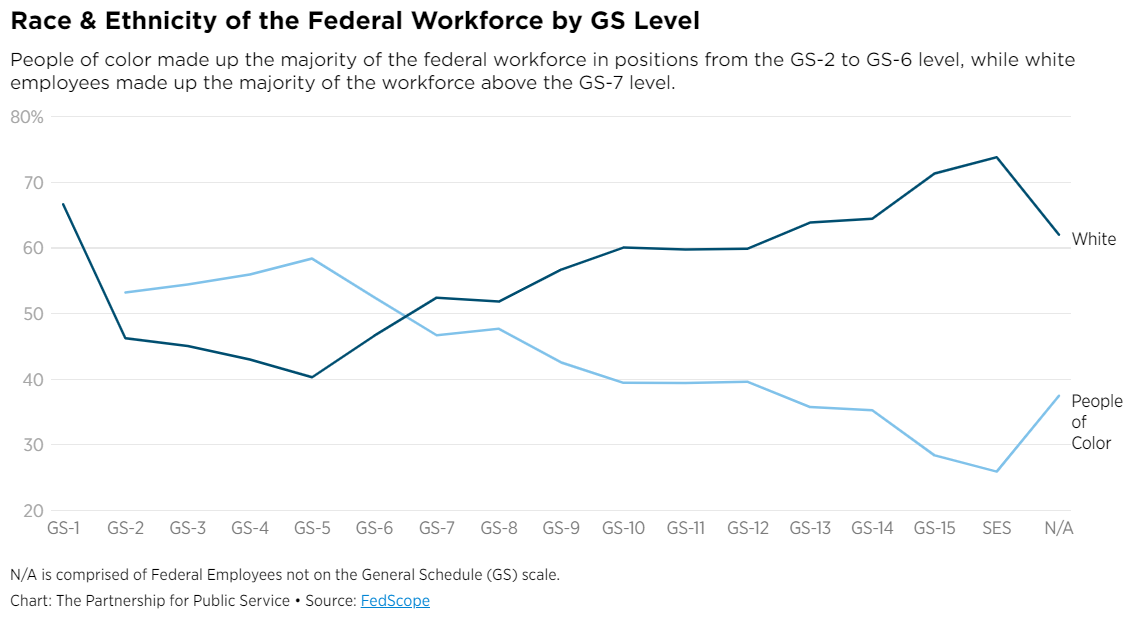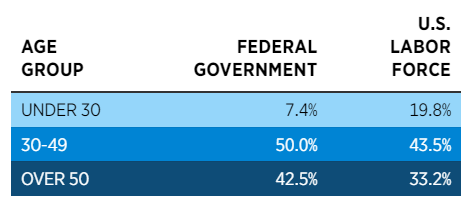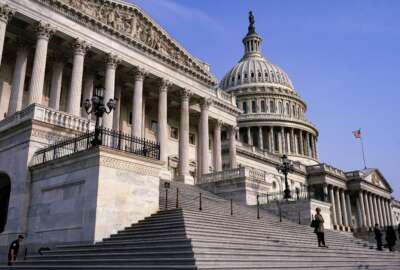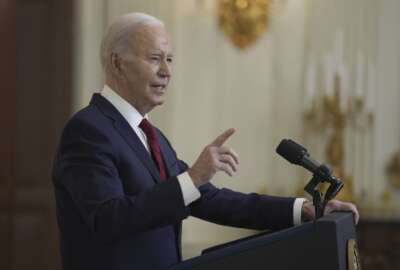Federal workforce diversity still lagging in more senior roles
Federal workforce diversity is condensed in the lower levels of the General Schedule, but fiscal 2023 data indicates a possibly different trend in the future.
Although the federal workforce on the whole is relatively diverse, much of that diversity is condensed on the lower end of the General Schedule.
It’s a demographic trend that has persisted for years, but there may be a few early signs of change, according to a July 1 workforce report from the Partnership for Public Service that uses data from FedScope.
Data from fiscal 2023 shows that 60% of the federal workforce is white, 19% of federal employees are Black and 10% are Hispanic. By comparison, for the nationwide workforce, 76% of employees are white, 13% are Black and 19% are Hispanic.
Breaking down diversity by GS level, the Partnership’s data report shows that white federal employees make up a much larger portion of the workforce at GS-7 and up through the Senior Executive Service, taking up many mid- and top-level technical roles as well as many supervisory positions.
By contrast, people of color hold a higher portion entry-level administrative positions between GS-2 and GS-6, the Partnership said.

The long-time workforce trend is beginning to change, albeit slowly, the Partnership said. Between 2022 and 2023, the percentage of people of color in the SES rose 1%, from 25% to 26%.
Similar trends occur when breaking down the workforce by gender. Overall, women make up 45% of the federal workforce, while men comprise 55%. But again, men make up a larger portion of higher-level GS positions as well as SES roles. There appears to be a similar trend toward a more equal balance between men and women in the SES, the Partnership’s report showed.

Over time, the SES has gradually become more diverse as it has grown in size, but it’s still not fully representative of the federal workforce’s overall demographics.
During 2023, the SES grew by 272 members, bringing the total up to 7,753 career SES employees governmentwide. It’s the largest year-over-year increase for the SES workforce in the last decade, the Partnership said.
Along with the net gain in size, the number of workers leaving the SES is increasing too, mostly due to retirements. At the end of fiscal 2020, 40.6% of SES members were eligible to retire within a year. But by the end of 2030, 79.8% of the SES will be retirement-eligible, the Partnership reported last year.
Some employee organizations view the likely retirement surge in the coming years as an opportunity to create a more diverse SES in the future.
“Agencies must recruit young talent and employees with the necessary skills for both current and future needs,” the Partnership wrote in its data report. “Ensuring a diverse workforce is essential, as is developing leadership capabilities within the organization, improving hiring processes and implementing policies to retain high-performing workers.”
Early-career employees in the federal workforce
Along with diversity trends, the federal government’s struggle to recruit and retain early-career employees has also gone on for years.
From 2008 to 2012, the percentage of feds between ages 20 and 29 hovered around 8-9%, a high point over the last two decades. But back in fiscal 2000, just 4.7% of federal employees were under 30 years old.
According to 2023 data, the most recent available, 7.4% of federal employees are under age 30, the Partnership said.
The federal workforce generally trends older than the nationwide workforce. While employees under age 30 represent 7.4% of the federal workforce, they make up 19.8% of the nationwide workforce. Employees between ages 30 and 49 comprise half of the federal workforce, and those over age 50 make up about 43%.

In its Workforce of the Future playbook, the Office of Personnel Management said early-career talent recruitment is a challenge in part because agencies typically view younger workers as short-term hires. That perspective leads to fewer positions being reserved for early-career employees, and less prominence of early-career recruitment as part of agencies’ workforce planning strategies.
Because of the long-term struggle, OPM in recent years has made early-career recruitment and retention a priority. For instance, OPM created an intern experience program in 2023, which it has continued this summer. OPM’s online internship portal, as well as updated Pathways Program regulations, also aim to ease the challenge of early-career recruitment.
As a result of those changes, OPM Acting Director Rob Shriver said there have been early signs of a renewed and increased interest in federal job opportunities from younger employees.
“We want to bring the interns together to help them feel like they’re part of a cohort here, to show that there are people across the government who are working in internship opportunities,” Shriver said in a recent interview with Federal News Network. “[We also] make sure they’re having a good experience, so that they are our force multipliers — they are our recruiters-in-chief.”
In another effort to recruit early-career talent, the General Services Administration created the U.S. Digital Corps, a two-year program aiming to close the early-career technology talent gap in government.
The program, launched in 2022, brings small cohorts of young technologists into agencies, aiming to convert them into full-time positions by the end of their tenure. GSA’s first Digital Corps class graduated from the program on June 26.
“Over the past two years, you have proven yourselves in high-impact areas, whether it’s customer experience or public health, cybersecurity and more,” OPM Deputy Chief of Staff Margot Conrad said at the graduation ceremony. “This program exemplifies the broader work that we are pursuing at OPM to try and attract, develop and retain top tech talent for the whole federal workforce.”
Copyright © 2024 Federal News Network. All rights reserved. This website is not intended for users located within the European Economic Area.
Drew Friedman is a workforce, pay and benefits reporter for Federal News Network.
Follow @dfriedmanWFED






